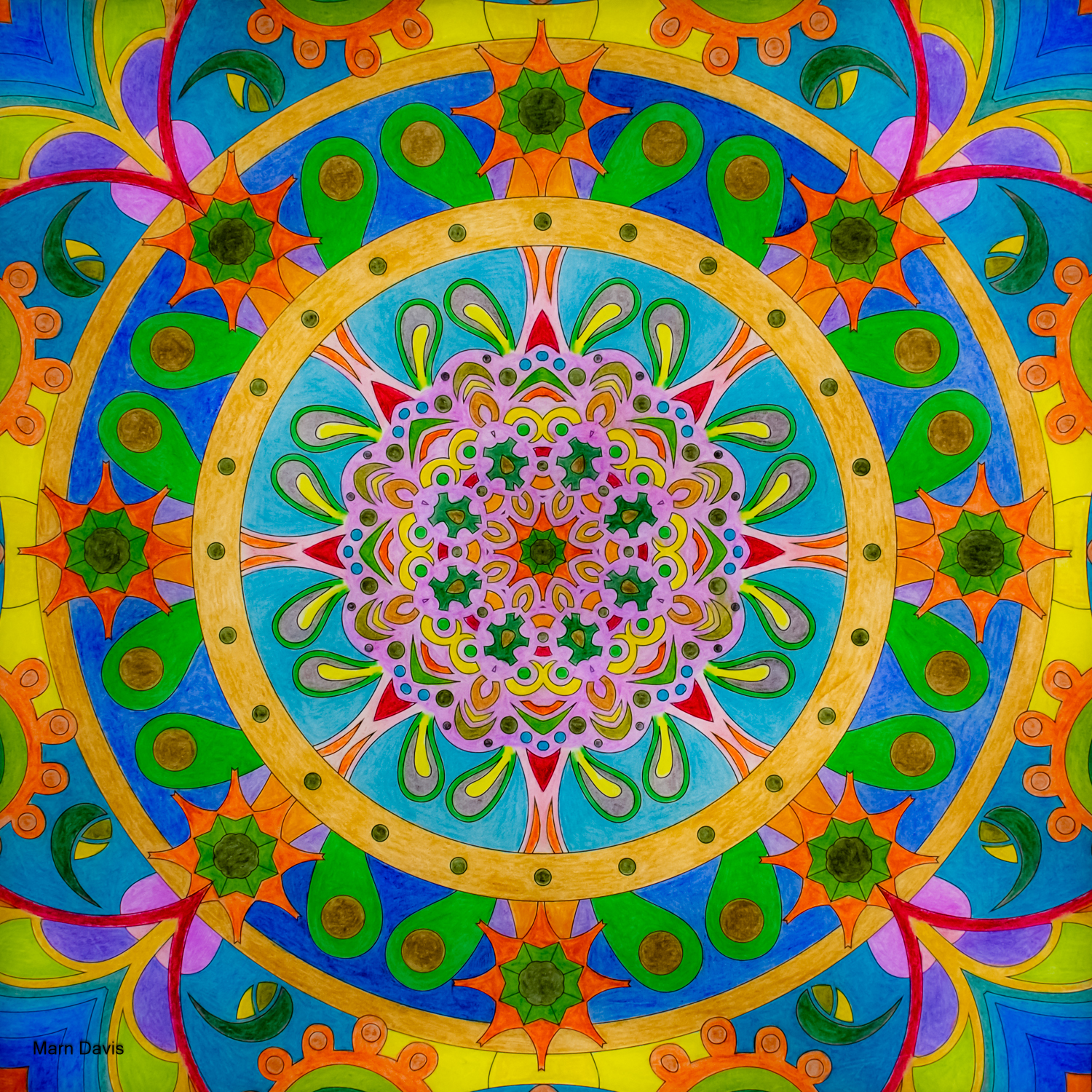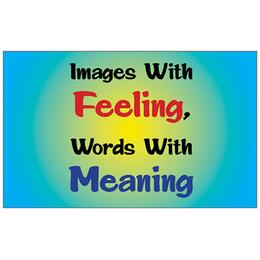About this Product
Mandala print.
ImagesWithFeeling, WordsWithMeaning
Meet the Maker
ImagesWithFeeling, WordsWithMeaning
I am here at GoImagine due to the fact that at the time I joined, GoImagine wants artist that actually do the art and in the case of photography and printing graphics, the platform wants the artist to do their own printing. Over on Etsy where I have been for a long time, POD/print on demand by a commercial printer is the norm, meaning once a digital file is “done”, the rest of the process is done by a commercial business. This is a loss of artistic control and a distancing oneself from the finished product. I am believing the customer base here at GoImagine cares about these distinctions, as I do. Further down I will share some history that pertains to why this is important.
As for me -
I was young, pretty young - when cameras got interesting to me. When I was in college - I took everything offered in the Photography program within the Art department. I bought my first SLR at this time. This period was my first experience making prints in a real darkroom. I Loved it. My first 6 years of creating images were all black and white. I have not been without a camera since, and I have been printing since. During the revival of arts and crafts in the 1970s , I sold my photography at Saturday markets and craft fairs. In 1999 Lyson Inks of the UK released the first ink sets that could be used by printers and artists and photographers that did not fade within months, thus giving birth to fine art printers that those of us that still do our own printing now use. I was on board within months of that ink set coming out and using it in the Epson 3000 that was the standard of affordability and usability by small businesses, graphic artists and photographers.
My major on college was Psychology. That background and experience guided me in the creation of affirmations and art/images that serve to stimulate reflection, connection, and getting in touch with feelings and thoughts. I do hope you enjoy those offerings!
In addition to the history below, which I believe you will find educational, is this idea that with large corporations and billionaires largely successfully taking control of too many things and making too much money, supporting small companies and individuals doing "good" and doing much less harm to our world is a desirable thing to do. Thank you.
I did some research and used ChatGPT to put this history together:
The period from the 1960s to the early 1990s, especially in the United States, saw a significant revival of interest in handmade goods, craftsmanship, and artisan products. This movement was deeply rooted in a reaction against the increasing industrialization, commercialization, and mass production that had become hallmarks of the mid-20th century. Here’s an overview of the cultural and social context, values, and circumstances that defined this era and the craft movement:
Cultural Context
Countercultural Movements:
The 1960s counterculture emphasized individuality, self-expression, and a rejection of corporate consumerism. People sought items that symbolized authenticity and a connection to human creativity.
The "back-to-the-land" movement, part of the broader counterculture, encouraged self-reliance, environmental sustainability, and traditional skills, such as woodworking, pottery, and weaving.
Reaction Against Mass Production:
The post-World War II boom brought mass-produced goods that were affordable but often criticized for their lack of durability, uniqueness, and aesthetic appeal.
Consumers turned to handmade goods to reconnect with a sense of quality and individuality.
Rising Interest in Folk Art and Heritage:
The period saw a resurgence of interest in American folk traditions, reflecting a broader cultural trend of preserving and celebrating heritage.
Craft fairs often highlighted regional and ethnic crafts, connecting consumers with the cultural stories behind the items.
Economic and Social Circumstances
Shift Toward Small Businesses:
Many artisans established small shops or operated out of home studios, reflecting the era's entrepreneurial spirit.
Craft shows provided a venue for these creators to reach customers directly, bypassing corporate retail chains.
Economic Opportunities for Women:
The craft movement became a significant avenue for women to achieve financial independence. Women-led businesses often emerged in areas like textiles, pottery, and jewelry-making.
Support for Local Economies:
The emphasis on local, handmade goods supported regional economies, fostering a sense of community and sustainability.
Values Underpinning the Movement
Individuality and Authenticity:
People prized items that were one-of-a-kind, a counterpoint to the homogenization of mass-produced goods.
Buying handmade allowed consumers to express their unique tastes and values.
Human Connection:
Craft fairs and markets facilitated face-to-face interactions between makers and buyers, creating a sense of personal connection and shared values.
Sustainability and Simplicity:
Handmade goods were often seen as more environmentally friendly, with less reliance on industrial processes.
The movement aligned with growing concerns about waste and the environmental impact of consumerism.
Aesthetic Appreciation:
The era celebrated the artistry and skill involved in creating beautiful, functional items. Crafts were often seen as both practical and artistic.
Resistance to Globalization:
Before the passage of NAFTA (North American Free Trade Agreement) in 1992, the movement was also a subtle protest against globalization and the influx of foreign-made goods. People valued the "made in America" ethos.
Legacy of the Movement
The craft movement of this era laid the groundwork for many contemporary trends:
The resurgence of farmers' markets, Etsy, and local artisan markets.
Continued interest in sustainable and ethical consumer practices.
The maker movement of the 2000s, with its emphasis on DIY culture and small-scale manufacturing.
And lastly (and this does not just apply to Walmart - every large corporation took advantage, and still are to this day):
Historically, from the 1960s through 1992-1994, here in America we had the revival of handmade artisan products over commercialized mass produced items! And fyi - after NAFTA passed in 1992 and went into effect in 1994, over ~75% of those same artisan craft business went out of business, or became very poor working folks. Walmart made big strides during this after period. NAFTA was a key factor in Walmart's growth during the 1990s and beyond. By facilitating cross-border trade and reducing costs, the agreement allowed Walmart to expand its market presence and reinforce its position as a retail giant in North America. However, this growth also came with significant economic and social implications for local economies and labor markets.
Job Offshoring: NAFTA contributed to the outsourcing of manufacturing jobs from the U.S. to Mexico, affecting American workers.
Impact on Small Businesses: Walmart's ability to leverage NAFTA's advantages made it even harder for small, local retailers to compete

How it’s Made
My wife, Marn Davis, loves color and geometric patterns. The gorgeous Mandalas are from her.
Medium is colored pencil on paper which I then digitize and print, commonly called a giclee.
Print sizes for this image are 8"x8"/ 12"x12"/ 16"x16".
Shop Policies
From order to shipping - please allow me up to 5 business days to ship your item. I often do this in 1-2 days, but there are many factors that can effect that and there is just me, so I appreciate your understanding this range of time to get your order shipped.
I gladly accept returns and exchanges. If you order from me, I do expect - if you are unhappy - to give me the opportunity to correct things if I can, before you publicly leave a less than stellar review for instance.
Contact me within: 7 days of delivery to establish intent to return and details of where to return item.
Ship items back within: 14 days of delivery and included tracking information for me, otherwise if I do not receive item (this occasionally happens with delivery services), there will be no refund.
I don't accept cancellations once I have reached printing stage.
Please contact me if you have any problems with your order.
Custom or personalized orders items can't be returned or exchanged.
Because of the nature of these items, unless they arrive damaged or defective, I can't accept returns for them.
Returns and exchange details
I will gladly refund the cost of your purchase, minus any applicable shipping cost, for any reason. Please contact me to initiate your return. The item must be returned in like new condition, and it is the responsibility of the buyer to package the artwork properly and pay return shipping. If the item is not returned in its original condition, the buyer is responsible for any loss in value.
I do my best to see that expectations and results match, but if for some reason you are not satisfied, allow me the opportunity to reset things to where we both are satisfied.
PACKAGING:
Your order ship well protected in a tube designed for prints, and I will provide tracking numbers. If, upon delivery, you note any damage, please take digital photos of the artwork, and any damage to the packaging, and contact me immediately. The photos you provide will ensure a speedy replacement and establish responsibility between me, you and the shipping carrier.
SHIPPING ADDRESS:
Please confirm your shipping address prior to placing your order. Shipping address changes cannot be accepted once your order is on its way to be shipped. Once an order ships, it is the client's responsibility to contact the shipping provider to have the shipment rerouted to a different address.
SHIPPING TIMES:
Once shipped, most items reach their destination within 3 to 5 business days. However, shipping times are not guaranteed by the carrier.
All images © Gary Damaskos or Marn Davis. Image copyright is not transferable with sale. Images may not be reproduced or edited by any means without written permission.
I am always happy to consider custom orders, wholesale or licensing inquiries. Please reach out if you have something you would like to discuss.


